

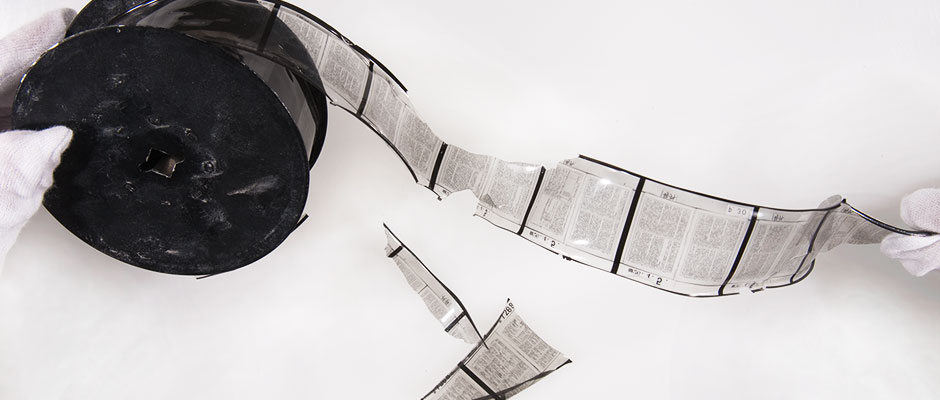
This roll of 35mm microfilm has become so brittle that the film crumbles when unrolled. A dry environment can promote embrittlement, but extreme embrittlement is a symptom of acetate base decay.
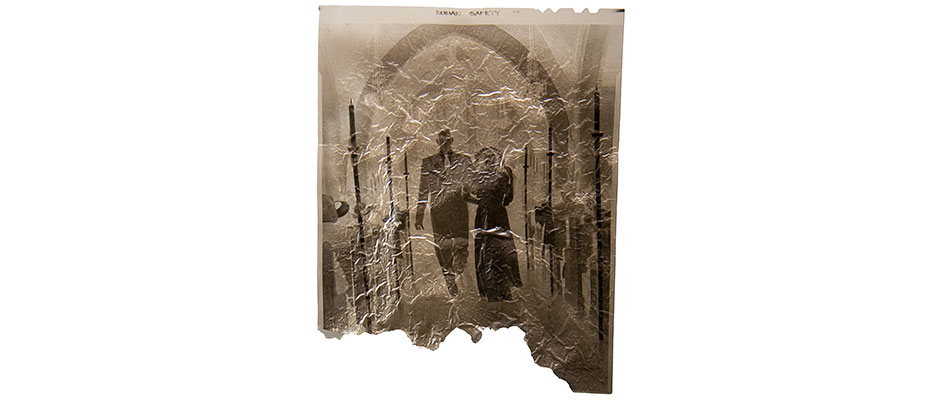
This acetate negative of a couple on their wedding day is so brittle than even light handling is destructive, and much of the object has already been lost to embrittlement.
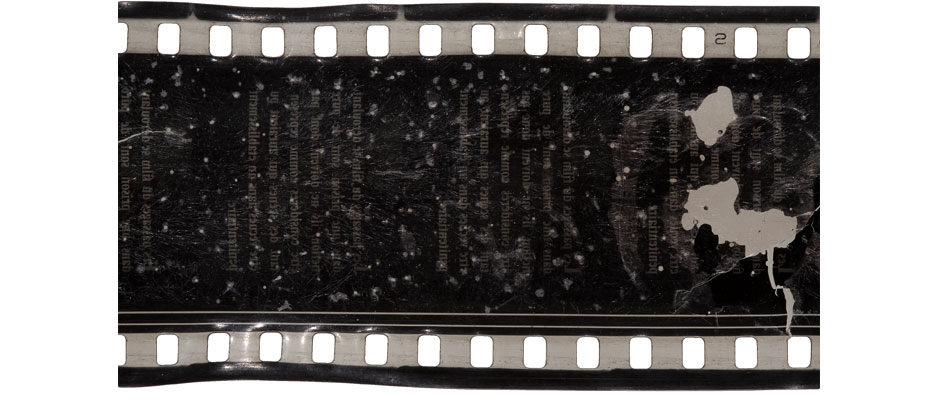
This strip of 35mm motion picture film is so brittle that the attempt to stretch or unroll the film has resulted in cracking of the emulsion and subsequent loss of image. Note also the permanent warp, shrinkage, and plasticizer exudation in this sample.
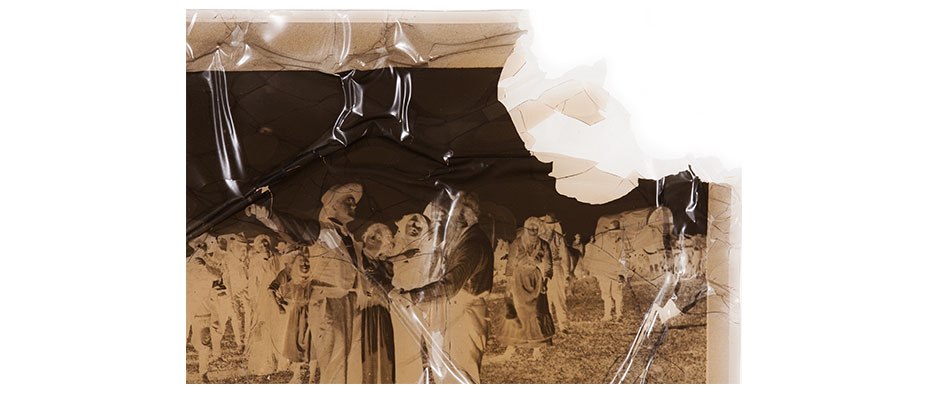
This severely channeled and shrunken acetate negative is also very brittle and has been damaged by handling.
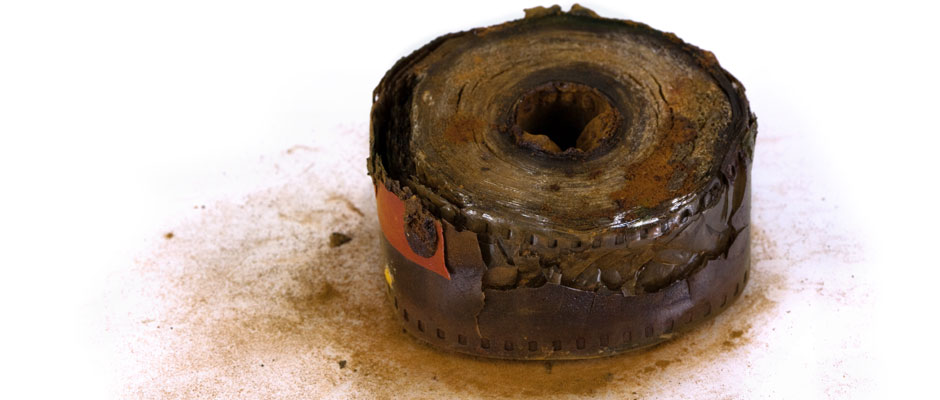
Embrittlement affects both nitrate and acetate film. This roll of nitrate film is in the final stage of nitrate base decay, which involves the gradual disintegration of the film into red or brown dust. Note the extreme brittleness of the film pack.
What it is and what causes itEmbrittlement of film is caused by the loss of elasticity in the plastic film base over time. Both nitrate and acetate film supports are subject to brittling as they age. When handling brittle film, you will notice the film is less able to withstand bending and twisting than usual. Under strain, the film may snap or break.Nitrate and acetate film supports are polymers of modified cellulose. Nitrate plastic is made by grafting nitro groups on to long chains of cellulose, and acetate plastics are made by grafting acetyl groups to cellulose chains. Over time, as these plastics are exposed to heat, moisture, and acids, these side groups (whether nitro or acetyl) detach and become free acids in the film’s storage environment. Once detached, the free acids promote chain scission, breaking apart the long polymer chains of cellulose. As these polymer chains shorten, the supports become less flexible and more brittle. Embrittlement is typically accompanied by shrinkage and permanent distortion of the film. |
What you can doEmbrittlement is irreversible. Though it is possible to successfully treat films with solvents that expand and soften a film temporarily so that it can be duplicated, these treatments do not result in the permanent re-dimensioning of the film base. Projection or rough handling of a brittle film can result in rips and tears, and should be avoided. Extreme cases of embrittlement in acetate and nitrate film indicate advanced decay.Prevention of embrittlement requires storage in a cold or frozen, moderately dry environment. |
At Risk
|